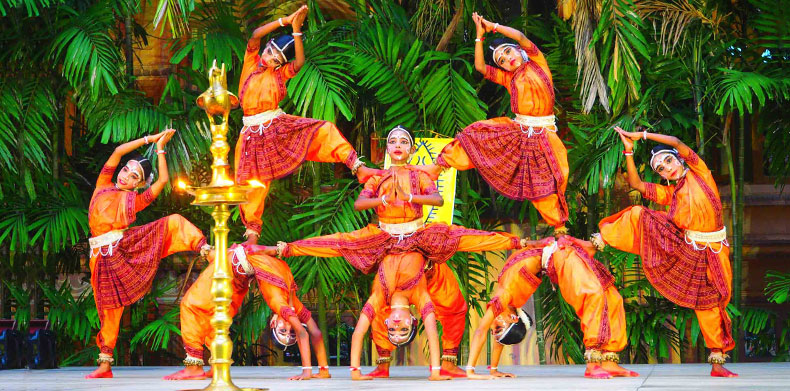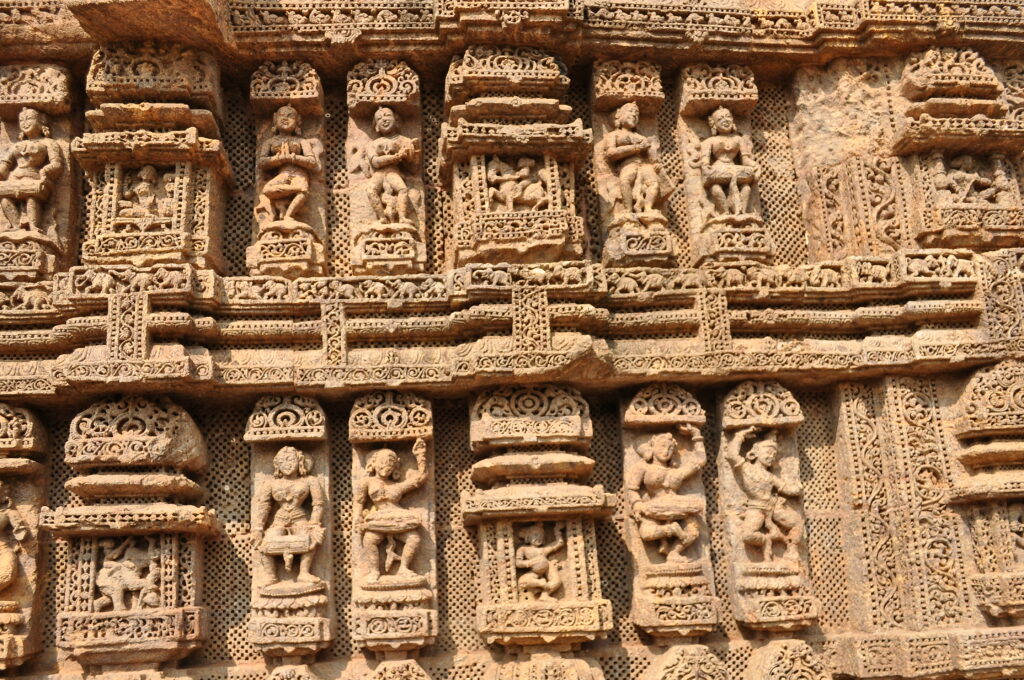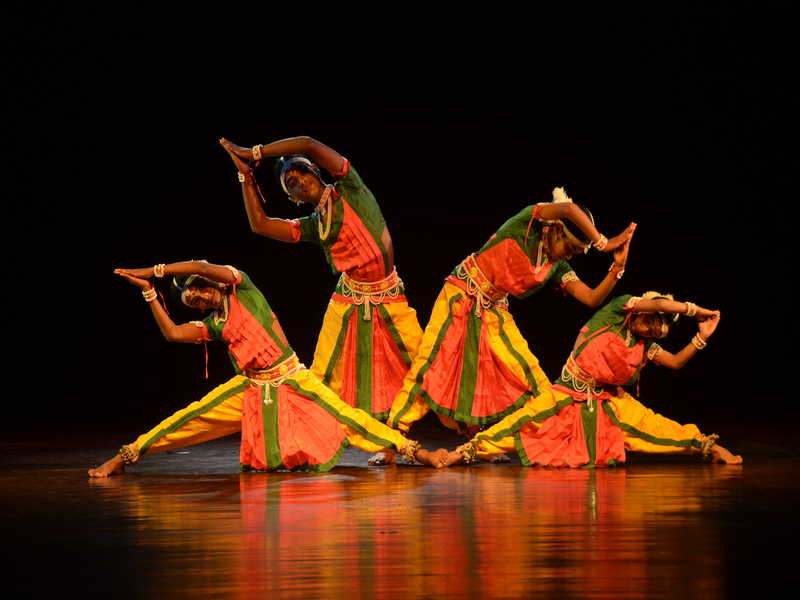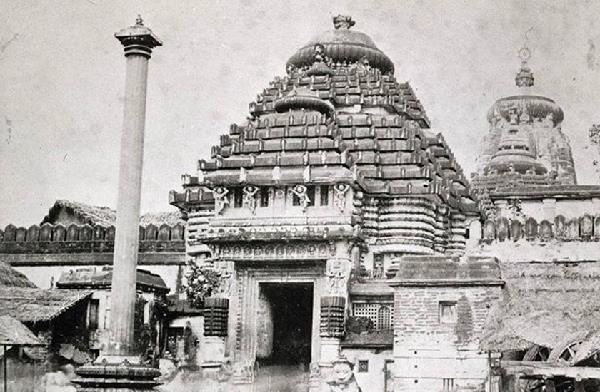Aloka Kanungo
In a three-part series, Aloka Kanungo traces the history of the Gotipua tradition – the precursor to modern day Odissi.

Dance is considered the domain of ladies-and thinking of a dancer brings a picture of a damsel or an Apsara to our mind. The numerous temple walls also adorn many more sculptures of female dancers than their male counterparts. But not surprisingly two of our deities – KRISHNA and SHIVA are known for their proficiency in dance. Shiva is attributed to the name of Nataraj and the creator of dance:
“TANDAVA” His dance is not random nor an occasional affair, but it is an eternal phenomenon. The dance of Shiva sustains the universe and imparts order and purpose to its activity. The ever-enduring cycle of creation, continuance, and dissolution are reflected in his dance. Krishna’s dance “RAAS” with the Gopinis is most popular and inspired most of the art forms.
In the contemporary scene, many male dancers in female attire still dominate the auditorium in ‘Andhra attain.’ Impersonating female characters also common in the Jatras. In Orissa young boys known as Gotipillas or Gotipuas or Sakhipilla dressed as females still dance their way to the hearts of millions.

The tradition of male dancers in the history of Odissi dance can be traced to the temple walls, though they are very few and outnumbered by the female dancers. There is a sculpture of a revered guru (male figure), whose name was the only one to be written below his figure showing respect to the art and the Guru at Konark temple. The existence of male/boy dancers was prevalent as early as during the reign of King Chodaganga Deva. They were at the service of Lord Jagannath, though there was no evidence of their performing dance inside temple premises. But they were very much part of the seasonal rituals performed outside the temple for the service of Lord Jagannath.
During the reign of King Anantavarma Chodaganga Deva, the service of Lord Jagannath temple was regularized. This has been elaborately described in a Telegu manuscript-“Jaganath Sthala Brutantam”. The translation reads- There were two groups or Sampradaya, comprising both male and female members who performed dance and music during Lord Jaganath’s rituals- at the three Dhupas, Badasingara and Pushpanjali as well as at other festivals and rituals. Each group had a minimum number of ten members.

Maheswar Mohapatra in his text Abhinaya Chandrika described males dancing in female costume in chapter Chhanda Khandam under the caption “Guna Veda- Nritya Veda”. According to him this type of dance though popular is Tamasi or inferior type. But for the satisfaction of the Muslim kings, it is better to use these dancers, as a female dancer will be offended in the company of the Yavanas.
“Shtree beshadharo Purusho Nrutya Chandadi Sovitah
Tamasi Kathitang Deshe Lokachar, Anusrute
Jabana Nrupa Toshartha Prerayet Pung Narthaki
Dharmaheena NrupaStuchha Sparshane Nati Ninditah.”
However, he has agreed sometimes this type of dance is performed at the temples and royal courts.
‘Debata Karjyarthan Jogyah Athaba Nrupa Sebane
Jadyapi Nartane Pungsah Samartho Jayate Kwachit.’
According to Jadunath Singh Mohapatra, the author of Abhinaya Darpana Prakash-Dance is classified according to its performer. If it is performed by men then it is NATYA, if by women then it is called NRITYA, but when men perform in the guise of women, it is termed as NRUTTA. ‘Pung Kartukang Bhabenatyang Nrutyang Shree Kartukang Matamhtree Beshi Purusha Krutang Nruttang Chobhaya Kartukam.’
It shows the practice of male dancers in female attire was prevalent long ago. But surprisingly the name of Gotipua was not familiar till 1946. The boy dancers were known as Jagaghara Pilla or Akhada Pilla. How this name came into existence it is difficult to say. Goti means one and pilla means boy. Together they mean one boy. May be this name was conferred because they were supposed to dance solo, but again surprisingly enough gotipua dance was always performed in duet and some times the number increases to three (Triplets) and four (quadruplet) & nowadays the groups prefer to have as many as members to give spectacular performances. Together they are able to exhibit visual extravaganzas, which are a treat for the eyes.

According to historians, the boy dancers came to the forefront during the time of Bhoi king Ramachandra Deva (17th Century A.D.) He not only installed new images at Lord Jagannath temple and reappointed all the sevayats (servants of the temple), but also allotted seven streets to seven types of sevayats.
The Anga Alasa Patana was allotted to the Maharis and the Chapaakhada Palli was allotted to the boy dancers. These akhadas or gymnasiums groomed boys in martial arts such as wrestling and boxing for recreation as well as to protect the temple from the invaders. The Akhada lent training not only in martial arts, bodybuilding and fitness program but also finer arts like dance & music. It could be a unique defense program in those days of turmoil to keep the meek and thin skinny boys as dancers in the fore front to deceive the invaders. That may be the reason to introduce or revive Bandha Nritya to make their body supple and fit. (To Continue)
(Aloka Kanungo is a famous Odissi dancer and an outstanding exponent of the dance form & lives in Kolkata)






















